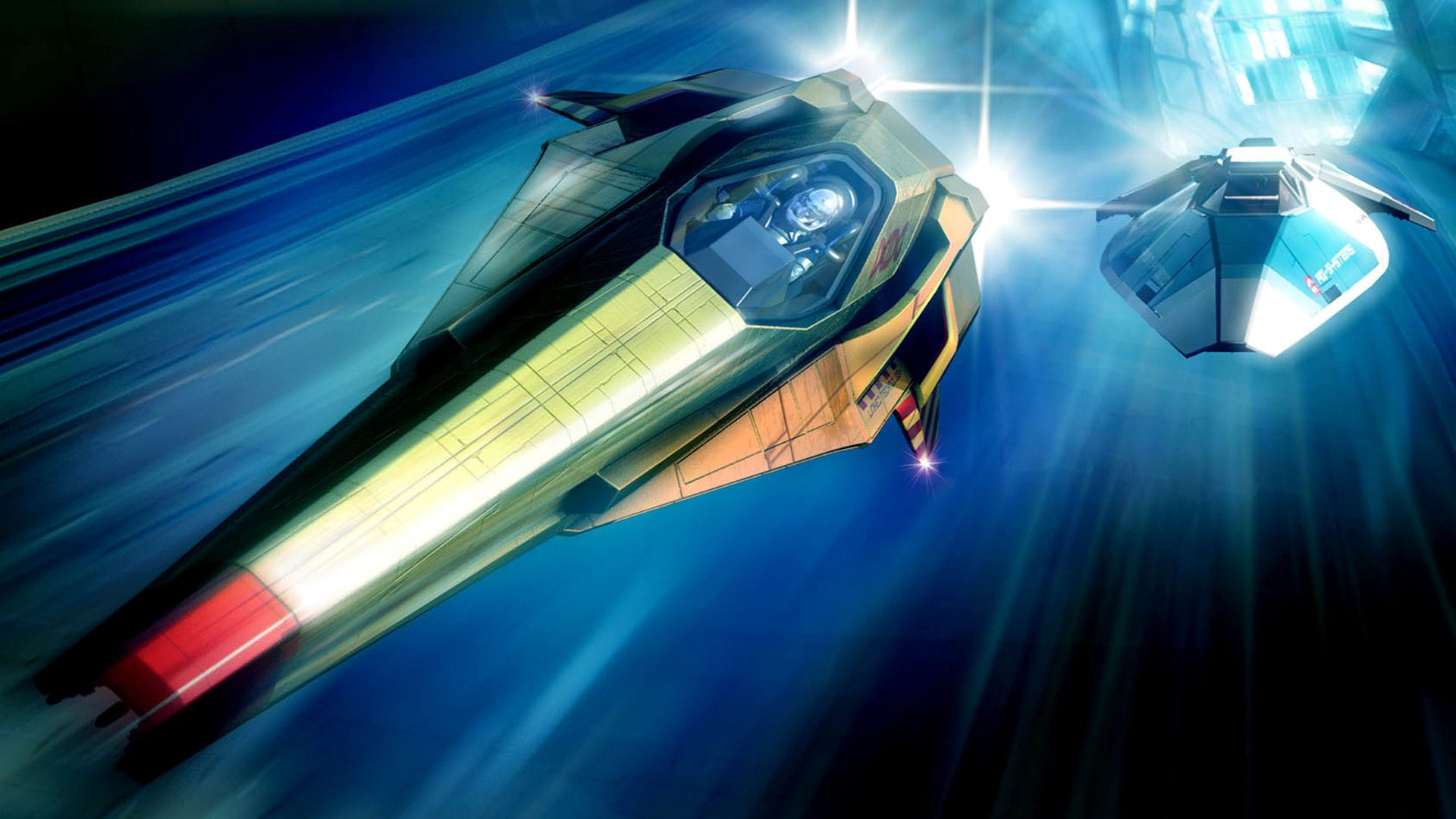The PlayStation 2 wasn’t just a juggernaut in terms of sales—it was a cultural moment. In the early-to-mid 2000s, anime was exploding outside Japan. Toonami, Adult Swim, and DVD box sets brought series like Dragon Ball Z, Naruto, One Piece, and Cowboy Bebop into living rooms across the world. The result? A booming demand for games that let fans play their favorite shows. And the PS2 delivered in spades.
With its massive install base, a longer lifespan than most consoles, and support for both 2D and 3D graphics, the PS2 became a haven for anime tie-ins. Japanese developers took full advantage—some delivered high-budget fighters with huge rosters, while others gave us deep cuts, spin-offs, and experimental genre blends. Whether you were a mecha-head, a shonen brawler, or just in it for the vibes, the PS2 had something for every anime fan.
Dragon Ball Z: Budokai Tenkaichi 3
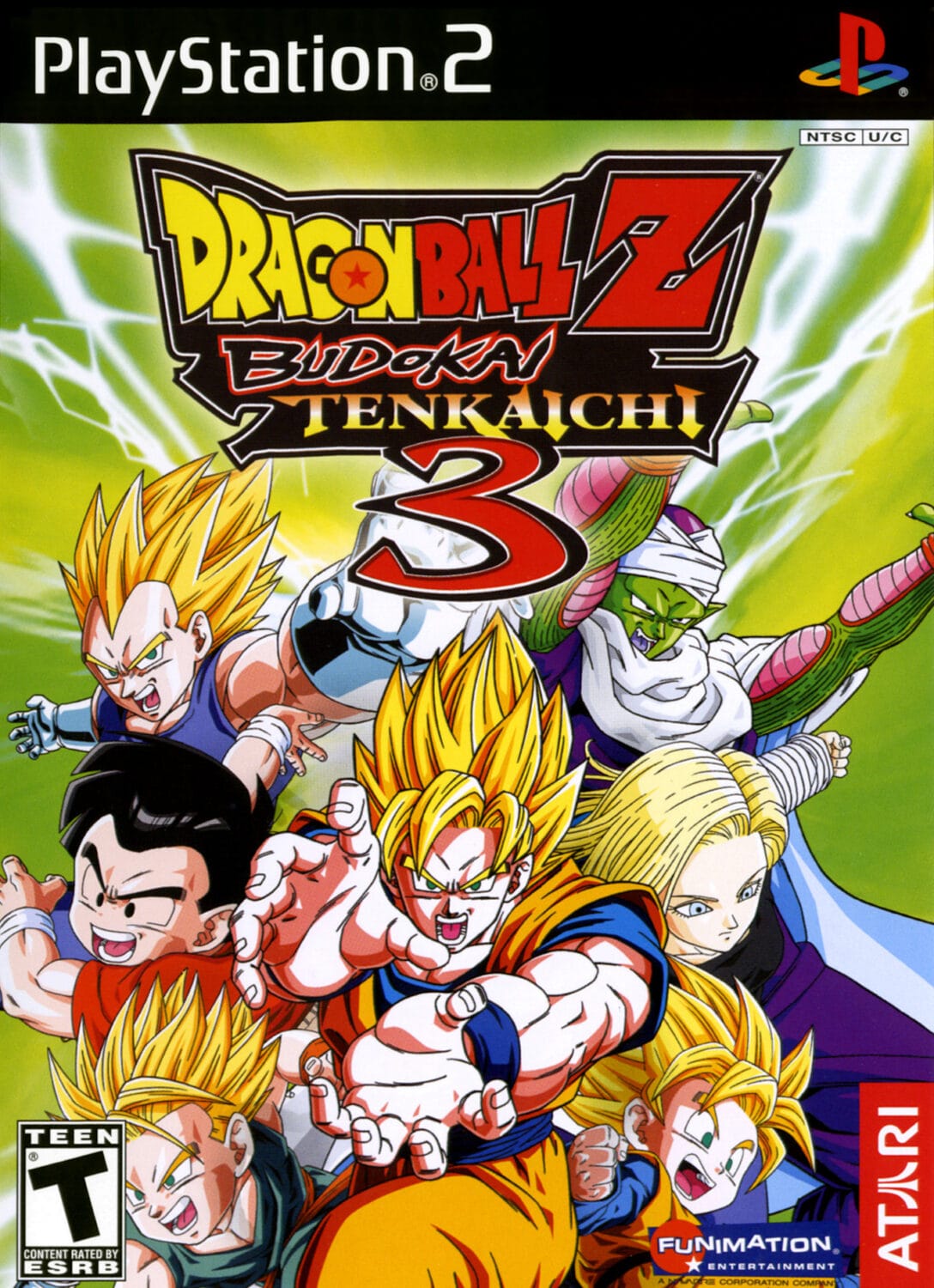
- Developer: Spike
- Release Year: 2007
If there was ever a love letter to Dragon Ball, this was it. Budokai Tenkaichi 3 featured a staggering 150+ characters—including GT transformations, movie villains, and obscure fan-favorite fusions. No other DBZ game came close to this kind of scope. The 3D combat engine let you fly across massive environments, teleport behind opponents mid-combo, and engage in full-blown beam struggles. Every stage was destructible, and fights felt like they were ripped straight from the anime—complete with in-character dialogue and explosive special moves.
Why It’s Worth Playing: This is the Dragon Ball sandbox. Whether you're diving into chaotic versus matches or reliving iconic anime battles, Budokai Tenkaichi 3 is still unmatched in terms of variety and spectacle. It's pure fan-service done right, and thanks to modern emulation and fan mods, it’s more alive than ever.
Dragon Ball Z: Budokai 3

- Developer: Dimps
- Release Year: 2004
Where Tenkaichi 3 delivered scale, Budokai 3 countered with finesse. This 2.5D fighter offered smooth, responsive mechanics and a clean, cel-shaded art style that popped off the screen. The highlight was Dragon Universe mode, an RPG-lite campaign where you flew around the DBZ world map, trained, found secret battles, and collected capsules to upgrade your fighters. It struck a perfect balance between accessibility and depth, earning a loyal competitive following long before FighterZ came onto the scene.
Why It’s Worth Playing: Budokai 3 is still one of the most mechanically satisfying Dragon Ball games ever made. Its mix of accessible gameplay, deep systems, and RPG-style single-player progression makes it ideal for both casual fans and fighting game veterans. If you're looking for skill-based showdowns with serious style, this is the one.
Naruto: Ultimate Ninja 3
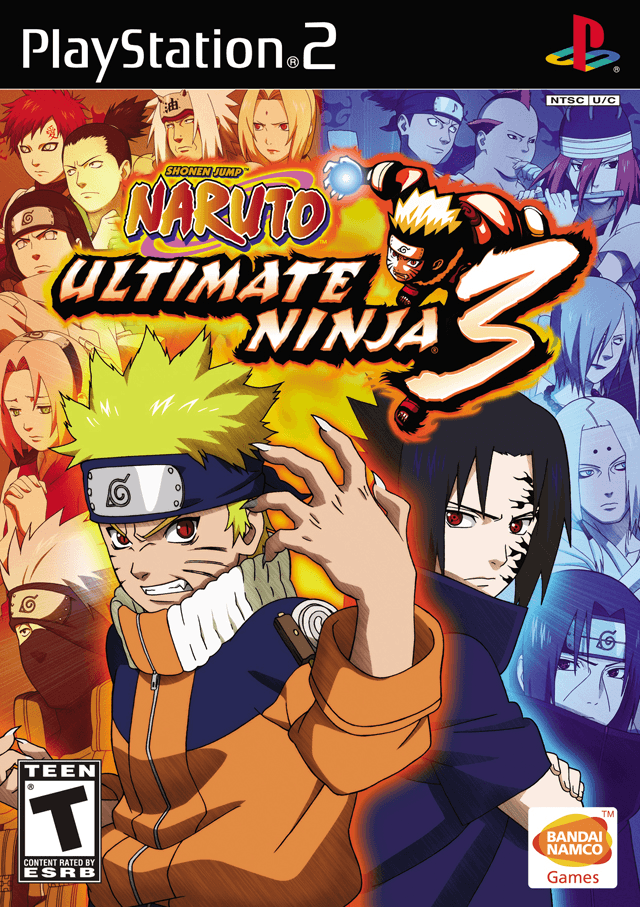
- Developer: Cyberconnect2
- Release Year: 2008
This was the game that made Naruto’s PS2 presence undeniable. Ultimate Ninja 3 perfected the flashy 2D fighting formula with an expanded roster, over-the-top jutsu animations, and a story mode that let you relive the original anime’s most iconic battles. Combat was fast-paced and full of character-specific flair, with dramatic cut-ins for ultimate moves and stylish transformations mid-fight. Add in a deep pool of unlockables, including costumes, support characters, and secret missions, and it was the kind of game you could sink hours into with friends—or on your own.
Why It’s Worth Playing: Ultimate Ninja 3 captured the heart of Naruto's early years with charm and energy. It’s still a blast to play today thanks to its satisfying controls and sheer love for the source material. Think of it as the ultimate Shonen Jump mixtape of the Naruto universe circa pre-Shippuden.
Naruto: Uzumaki Chronicles 2

- Developer: Cavia
- Release Year: 2007
While the Ultimate Ninja series stuck to traditional fighting game roots, Uzumaki Chronicles 2 dared to be different. This action-RPG hybrid blended beat ’em up gameplay with a full story-driven experience. Players could explore villages, take on missions, and fight through waves of enemies using Naruto and other fan-favorite characters. The co-op mode and character-switching mid-mission added welcome depth, and the story—though non-canon—offered surprisingly engaging original content filled with ninja drama and big boss fights.
Why It’s Worth Playing: Uzumaki Chronicles 2 is a hidden gem for Naruto fans looking beyond the fighting ring. It offered a unique way to immerse yourself in the ninja world, complete with upgrades, side quests, and a fun battle system. It’s proof the Naruto franchise had more to offer than just PvP throwdowns.
One Piece: Grand Adventure
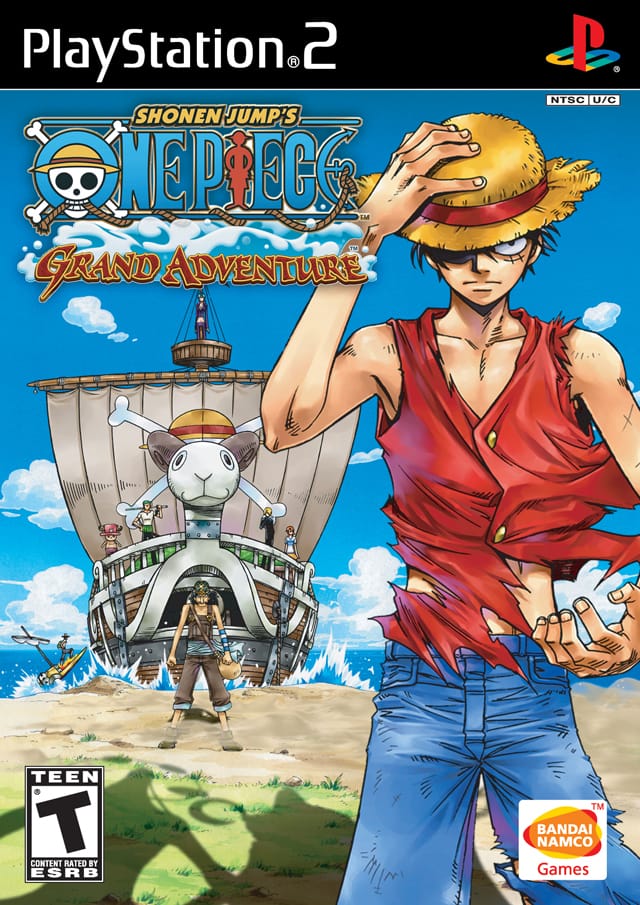
- Developer: Ganbarion
- Release Year: 2006
Before One Piece became an open-world juggernaut on modern consoles, it found its groove on the PS2 with Grand Adventure. Built on the solid foundation of Grand Battle, this entry expanded the formula with deeper mechanics, a full story mode, and an addictive crew-building system that felt like a fighting game crossed with a light strategy RPG. You could recruit and level up characters, sail across a sea chart in search of treasure, and challenge iconic enemies from the anime. Each character brought unique abilities, wacky ultimates, and classic One Piece humor—making every fight as wild as a Straw Hat showdown should be.
Why It’s Worth Playing: Grand Adventure nailed the adventurous spirit of One Piece in a way few games have since. The blend of cartoonish visuals, chaotic battles, and RPG progression gives it lasting charm. It’s perfect for fans who want a lighthearted but surprisingly deep anime brawler that doesn't take itself too seriously—just like the series it’s based on.
Battle Stadium D.O.N
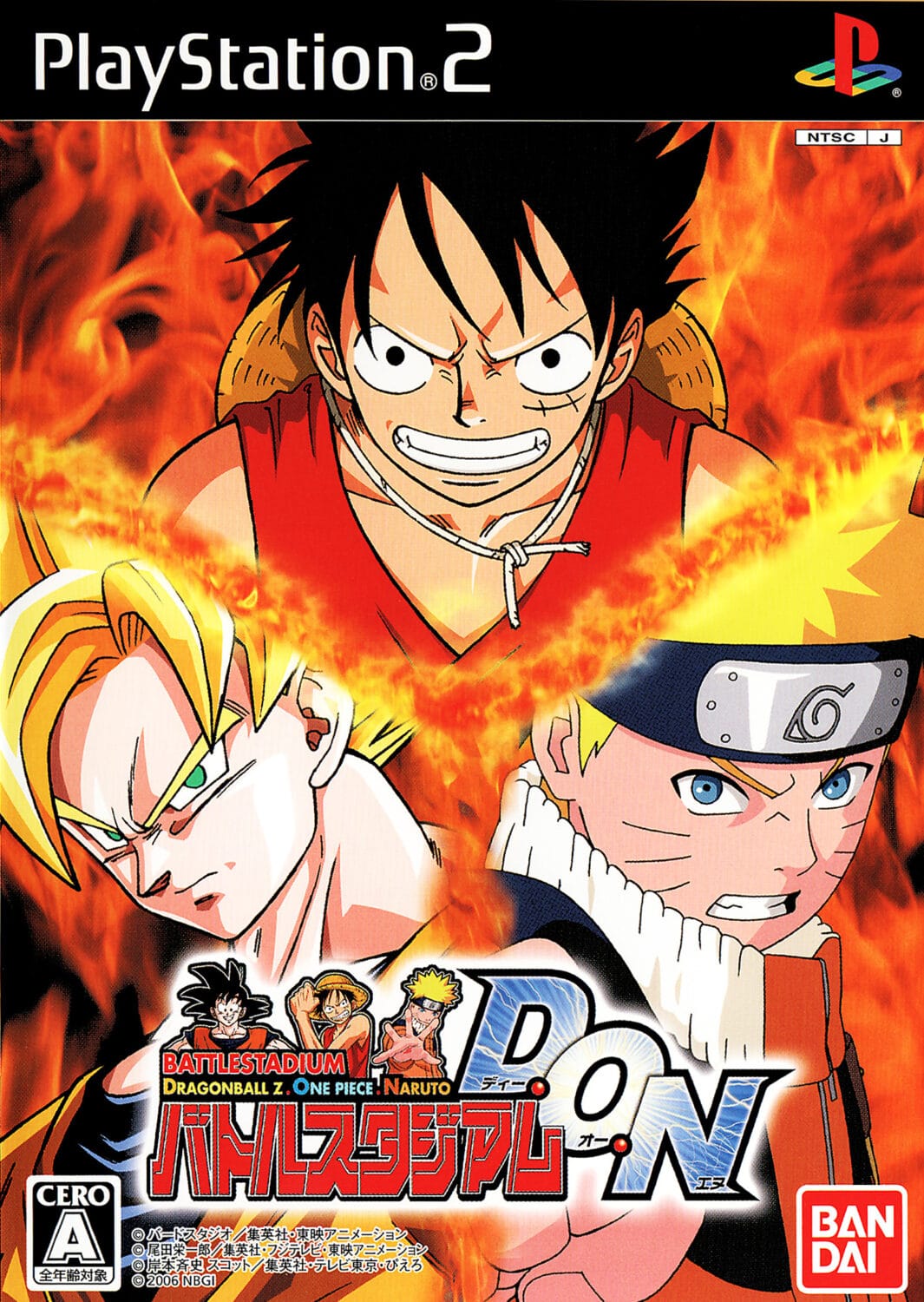
- Developers: Eighting, Q Entertainment
- Release Year: 2006
What if Super Smash Bros. featured only the biggest Shonen Jump legends? That’s Battle Stadium D.O.N in a nutshell. With characters from Dragon Ball Z, One Piece, and Naruto, it delivers fast-paced 4-player brawls in chaotic side-scrolling arenas, complete with over-the-top ultimates and animated backdrops. The roster isn’t massive, but it’s stacked with heavy-hitters, and the dynamic power bar system adds a tug-of-war twist to each fight.
Why It’s Worth Playing: If you grew up on Toonami, this is your dream match-up come to life. It’s fast, fun, and ideal for couch battles with fellow otaku. It’s the anime dream match you didn’t know you needed. Whether you're pitting Goku against Naruto or teaming Luffy with Sasuke, D.O.N is an explosive love letter to anime fandoms—and a multiplayer blast to this day.
Mobile Suit Gundam: Encounters in Space

- Developer: BEC
- Release Year: 2003
Finally, a Gundam game that made space battles feel right. Encounters in Space tossed players into the zero-gravity chaos of the Universal Century with full 3D freedom of movement, giving every dogfight a weightless thrill. From dueling Zeon aces to piloting iconic suits like the RX-78-2 and Gelgoog, it delivered cinematic action at light-speed. The campaign spans multiple characters and storylines across the UC timeline, complete with anime cutscenes and unlockable extras. It’s not just a game—it’s a playable love letter to Gundam’s deep lore.
Why It’s Worth Playing: Encounters in Space remains one of the most faithful Gundam simulations ever made. It’s immersive, fast-paced, and packed with fan service. For UC diehards or anyone craving a space combat game with substance, this is essential PS2-era mech mayhem.
Mobile Suit Gundam: Gundam vs. Zeta Gundam
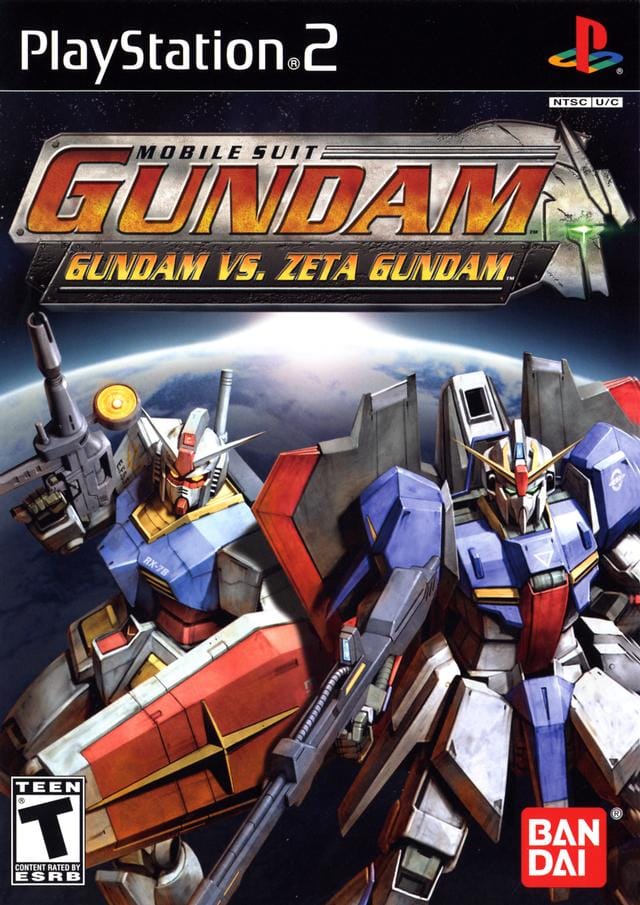
- Developer: Capcom
- Release Year: 2004
Taking a different approach, Gundam vs. Zeta Gundam focused on intense 2v2 battles with dozens of mobile suits pulled straight from the anime. Each unit had distinct playstyles, weapons, and transformation abilities, making strategy just as important as reflexes. Its arcade-style energy and clean visuals gave it a sharp edge, while the tight maps and fast-paced gameplay made every encounter feel like a pivotal anime skirmish. With multiple modes and a progression system, it had staying power too.
Why It’s Worth Playing: This is where Gundam’s tactical side shines. The balance between arcade action and mecha strategy hits a sweet spot, and the roster is a who’s-who of UC greatness. It’s still a blueprint for modern Gundam Versus titles—and a blast to revisit.
MS Saga: A New Dawn

- Developer: BEC
- Release Year: 2005
A total curveball in the Gundam catalog, MS Saga ditched the action for classic turn-based JRPG mechanics—with a Gundam twist. Set in an alternate universe, the game lets you build custom mobile suits from parts across multiple timelines, then send them into battle against original enemies. The story is surprisingly heartfelt, the characters are charming, and the customization is pure fanbait. Want a Zaku body with Gundam legs and a Wing-style beam saber? Go for it.
Why It’s Worth Playing: MS Saga is a criminally overlooked gem. It blends Gundam’s mechanical coolness with old-school RPG storytelling and deep mech building. For turn-based fans or collectors, it’s one of the PS2’s best-kept anime secrets.
Bobobo-bo Bo-bobo: Hajike Matsuri

- Developer: Hudson Soft
- Release Year: 2003
Welcome to one of the weirdest fighting games ever made. Based on the absurdist comedy anime Bobobo-bo Bo-bobo, Hajike Matsuri embraces total chaos—both in visuals and gameplay. Characters attack with nose hair, fish, and pure nonsense, and matches often feel like fever dreams in button-mashing form. It never left Japan, which is a crime against comedy, but fans of the anime or bizarre fighting games should absolutely hunt this one down.
Why It’s Worth Playing: Few games capture the pure chaos of absurdist anime this well. If you’re into weird imports, cult humor, or simply want to surprise your friends with something completely off the wall, Hajike Matsuri is an essential oddity. For lovers of cult anime and slapstick anarchy, this is peak weird-Japan energy—and somehow, it works.
Busou Renkin: Youkoso Papillon Park e

- Developer: Marvelous Interactive
- Release Year: 2007
Based on Nobuhiro Watsuki’s lesser-known series, Busou Renkin on PS2 offers a surprisingly competent arena brawler with tight controls and flashy visuals. Each fighter wields a unique alchemic weapon—from giant lances to flexible chains—and the stage designs complement the frantic pace. Though the anime never reached DBZ levels of fame, this adaptation more than holds its own. It’s stylish, quick, and easy to pick up.
Why It’s Worth Playing: Slick visuals, a strong combat system, and a rare chance to explore a forgotten Shonen Jump property make this a gem worth rediscovering. It’s also a great “what if” look at anime games that deserve more attention. If you like games like Naruto: Ultimate Ninja, this is a great under-the-radar gem to add to your PS2 library.
GioGio’s Bizarre Adventure

- Developer: Capcom
- Release Year: 2002
Long before JoJo’s Bizarre Adventure became a global meme machine, GioGio’s Bizarre Adventure (also known as JoJo no Kimyou na Bouken: Ougon no Kaze in Japan) was quietly flexing on the PS2. Using stunning cel-shaded graphics that match Araki’s manga style frame-for-frame, this stylish action game lets you control Giorno and his crew through key moments of Part 5. With unique Stand-based combat and anime-accurate posing, it captured the Joestar flair years before the West caught on.
Why It’s Worth Playing: Fans of Part 5 will love the attention to detail, while general action game fans will appreciate its inventive mechanics. It's a rare piece of Joestar history—and it holds up surprisingly well. Stylish, faithful, and full of flair, this is a must-play for fans of the series, especially those curious about JoJo’s gaming roots. It’s JoJo before JoJo was cool—and it still looks incredible today. (An English patch is available for this game.)
Lupin the 3rd: Treasure of the Sorcerer King

- Developer: Banpresto
- Release Year: 2002
Unlike most anime games on the PS2 that leaned on brawls or mech warfare, Treasure of the Sorcerer King invited players into a world of subterfuge, sleight of hand, and razor-sharp wit. It wasn’t about being the strongest, but the slyest. Every mission unfolded like an old-school caper film, blending stealth mechanics with puzzle-like levels that forced you to think more like a thief than a hero. You’d sneak through candlelit castles, dodge patrols, and crack safes—all with the series’ signature jazzy swagger lingering in the background.
Why It’s Worth Playing: Treasure of the Sorcerer King wore its Lupin DNA proudly. From the banter between Lupin, Jigen, and Goemon to the ever-tenacious Inspector Zenigata nipping at your heels, it felt like playing a lost episode of the anime. If you’ve ever wanted a game where the thrill comes from outsmarting foes rather than overpowering them, this is the hidden gem you’ve been waiting for.
Eureka Seven vol.1: The New Wave

- Developer: BEC
- Release Year: 2006
Rather than retell the anime, The New Wave acts as a prequel to Eureka Seven, focusing on new characters and their journey in the world of LFO mechs and trapar surfing. It blends on-foot missions, narrative sequences, and aerial mech-boarding combat in a stylized, often cinematic experience. The story leans into the show’s emotional depth and techno-mysticism, while the hybrid gameplay offers something refreshingly different from typical anime brawlers.
Why It’s Worth Playing: Stylish and surprisingly deep, The New Wave is more than a cash-in—it’s a genuine prequel that stands on its own. Its mix of drama and action is tailor-made for fans of the anime, and the mech-boarding gameplay is still unlike anything else on the PS2. Plus, riding a mech like it’s a hoverboard never gets old.
Rurouni Kenshin: Meiji Kenkaku Romantan – Enjou! Kyoto Rinne

- Developer: Banpresto
- Release Year: 2006
This PS2 exclusive finally gave Rurouni Kenshin fans the console game they’d been waiting for. Rather than a pure brawler, Enjou! Kyoto Rinne leans into storytelling as much as swordplay. Set during the Meiji Restoration, it lets players step into the sandals of Kenshin and other fan-favorite characters as they slice their way through enemies in combat arenas where Kenshin, Saito, and other warriors unleash flashy, historically inspired sword techniques. Emotional arcs are retold with care, complete with cel-shaded cutscenes and authentic sword techniques that reflect each fighter’s style.
Why It’s Worth Playing: For long-time fans, it’s a nostalgic slice of anime gaming history that still hits hard today.It’s a rare chance to experience Rurouni Kenshin in game form that’s both faithful and fun. The blend of drama, combat, and nostalgia hits just right—especially for fans of the anime’s emotional storytelling. This is Kenshin done right—faithful to its source, engaging in its gameplay, and deeply respectful of its tone.
RahXephon: Soukyuu Gensoukyoku
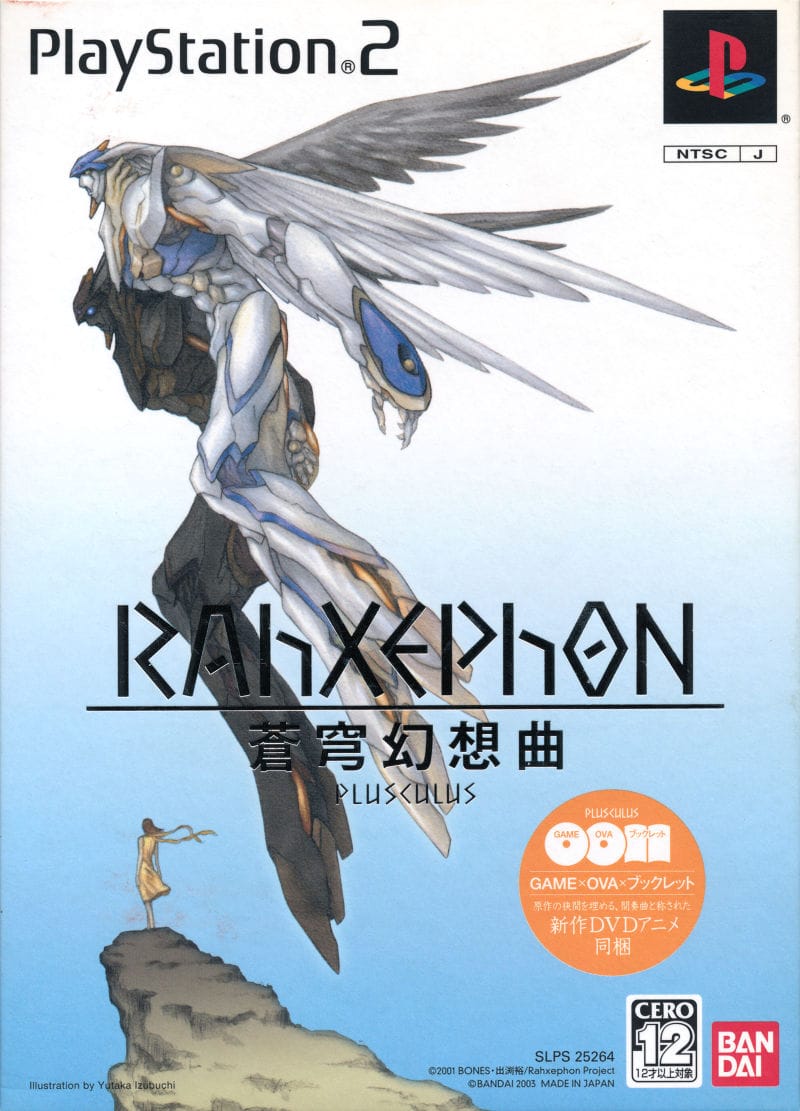
- Developer: Banpresto
- Release Year: 2003
Often (unfairly) dismissed as an Eva clone, RahXephon gets its own gaming spotlight here in a moody blend of visual novel and tactical RPG. Soukyuu Gensoukyoku (or Rahxephon: Harmonic Resonance) blends visual novel storytelling with tactical RPG combat, unfolding over dreamlike chapters filled with emotional weight and philosophical musings. The game takes time to explore character relationships and themes of music, memory, and identity. Between dialogue-heavy sequences, you command giant mechs in turn-based battles that integrate rhythm elements—music isn’t just aesthetic here, it’s part of the world’s power structure.
Why It’s Worth Playing: It’s slow, strange, and utterly immersive. For fans of Evangelion or Xenosaga, this is a hidden gem with rich narrative layers and strategic gameplay that rewards patience and curiosity. It’s one of the PS2’s most unconventional anime adaptations—and that’s exactly why it’s worth seeking out.
Hokuto no Ken: Shinpan no Sousousei Kengo Retsuden
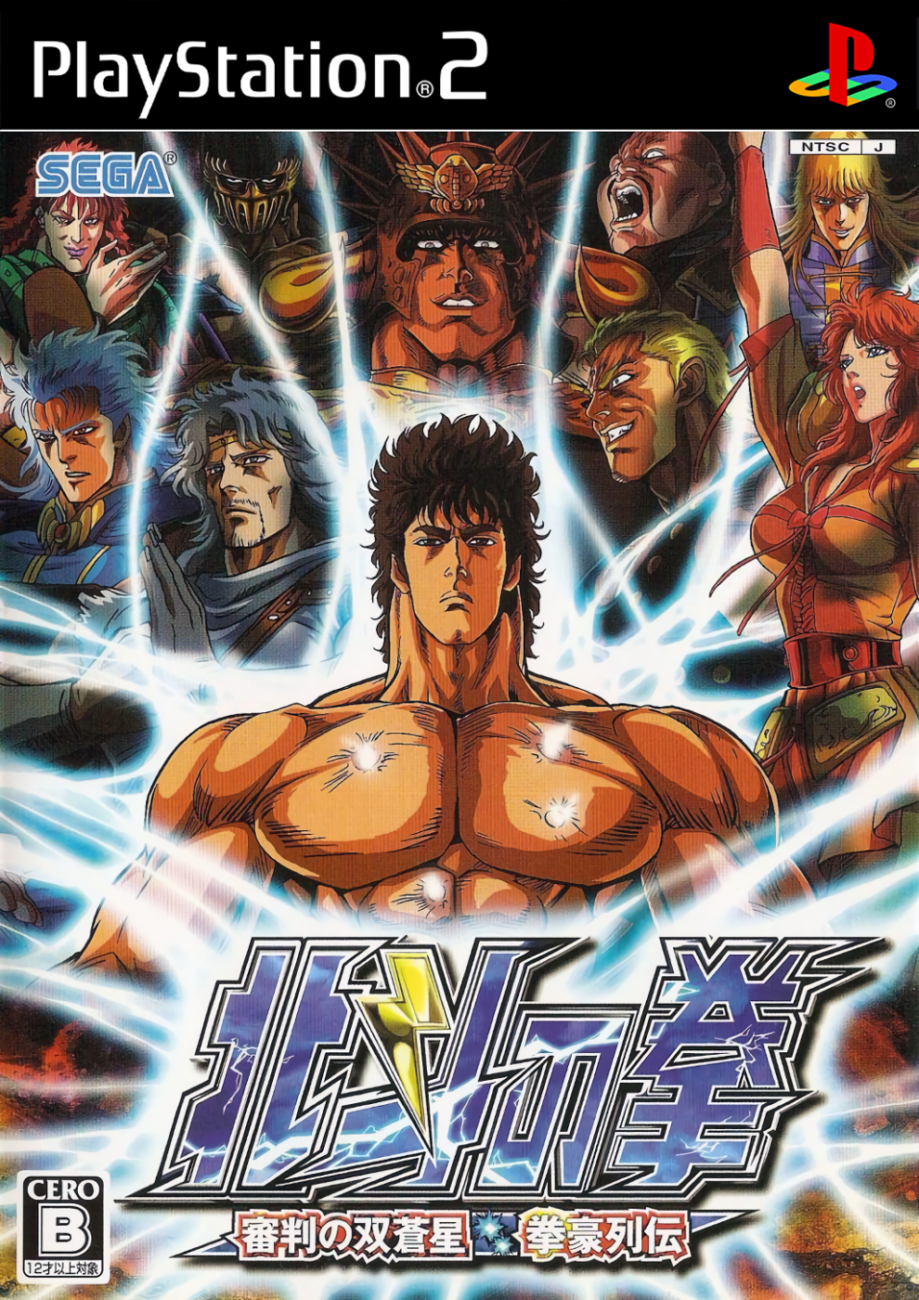
- Developer: Arc System Works
- Release Year: 2007
Based on the iconic manga and anime series Fist of the North Star, Hokuto no Ken is a port of the 2005 arcade version that was developed by Arc System Works. This game isn’t just about throwing punches—it’s about dominating your opponent with cinematic, high-impact combat. Players can perform finisher moves such as Fatal KOs, which can instantly defeat opponents once the Seven Stars of the Hokuto gauge is depleted.
Why It’s Worth Playing: With the combination of its fluid 2D sprite animation, crisp visuals, and lightning-fast gameplay, every fight in the game feels like a battle straight out of the series. Despite its faithful adaptation to the source material, very few fighting game fans are aware of this game’s existence. For fans of the series and fighting game aficionados alike, this title remains an exhilarating, must-play hidden gem of the PS2 era.
Akira Psycho Ball
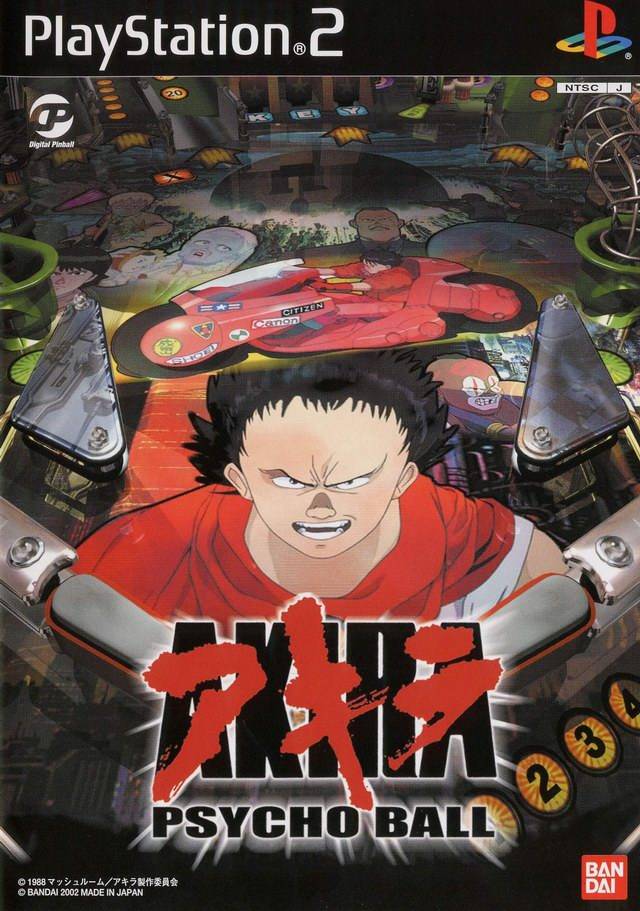
- Developer: KAZe
- Release Year: 2002
A pinball game based on Akira? When you think Akira, “pinball” probably isn’t the first genre that comes to mind. It sounds weird, but Psycho Ball makes it strangely work. It reimagines Akira’s cyberpunk chaos into a hypnotic, multi-table pinball experience complete with digitized clips, futuristic HUDs, and dynamic music drawn straight from the film’s moody score. Each table represents key scenes from the movie—from the hospital nightmare to the Olympic Stadium climax—and blends visual storytelling with kinetic ball physics.
Why It’s Worth Playing: It’s Akira, but reimagined through electro-arcade energy. As odd as it is, it’s one of the most unique adaptations of any anime ever made—bold, experimental, and oddly compelling. For Akira fans and pinball lovers alike, it’s a curio that’s far more playable than you'd expect.
Samurai Champloo: Sidetracked
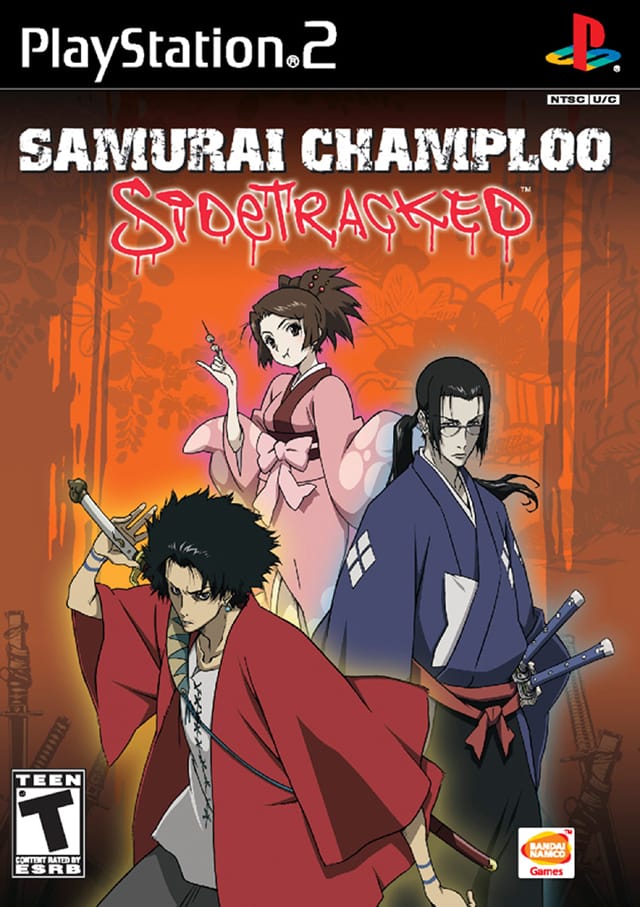
- Developer: Grasshopper Manufacture
- Release Year: 2006
Sidetracked isn’t just a by-the-numbers anime tie-in—it’s an original tale written by series creator Shinichirō Watanabe. Set between episodes of the show, the game sees Mugen and Jin crossing paths with a new cast of rogues, corrupt samurai, and oddball townsfolk. Combat is a stylish blend of swordplay and beats, where chaining attacks to hip-hop tracks builds combos and unlocks devastating finishers. The game leans into side quests, item crafting, and branching paths, delivering a surprisingly fleshed-out experience that complements the anime’s rebellious tone.
Why It’s Worth Playing: It’s rare for an anime tie-in to feel this fresh. Sidetracked is stylish, fast, and sounds amazing—just like the show. This isn’t just fan service—it’s a playable Champloo episode with gameplay chops. Fans of the show will love its flair and humor, while action game fans will appreciate its inventive rhythm-based mechanics.
Cowboy Bebop: Tsuioku no Serenade
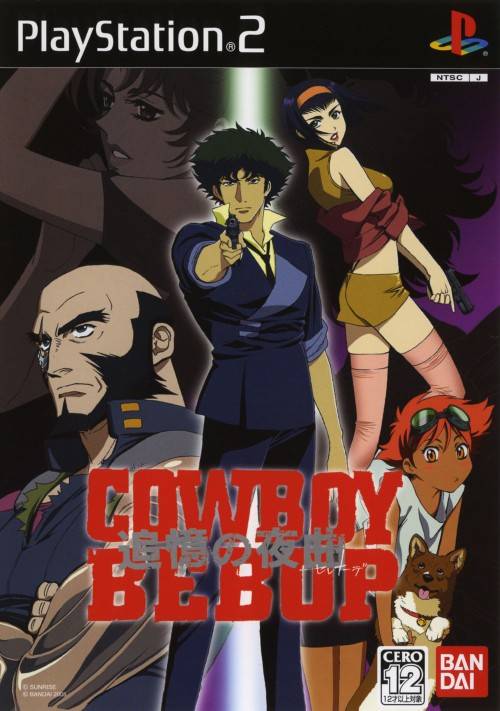
- Developer: Banpresto
- Release Year: 2005
Set before the anime’s final episodes, this Japan-only title delivers a gritty original story with playable missions for Spike, Jet, Faye, and Ed. With moody environments, jazzy aesthetics, and narrative-driven gameplay, it plays more like a noir detective story than a traditional shooter or brawler. Every character controls differently, and the storytelling is pure Bebop—cool, sad, and deeply human.
Why It’s Worth Playing: It’s the Cowboy Bebop game that understands the feel of the show. More noir visual novel than action title, but it nails the atmosphere and tone in ways few licensed games ever do. It’s the closest thing we’ve had to a full-length Cowboy Bebop game that gets it. For die-hard fans, this is pure space-western gold—despite the language barrier.
Final Thoughts
Are you engaging in epic space battles in Mobile Suit Gundam? Hitting the digital waves in Eureka Seven? Or maybe you’re finally giving Battle Stadium D.O.N. the anime crossover fight night it deserves. Each game, from Budokai Tenkaichi 3 to Cowboy Bebop: Tsuioku no Serenade, wasn’t just tie-ins. They brought something new to the table—some faithful, some weird, all memorable.
These anime games were extensions of beloved worlds, made with the kind of care and creativity that’s often missing in modern licensed titles. Whatever you pick, these PS2 anime games are proof that when the right anime meets the right console, amazing happens.


